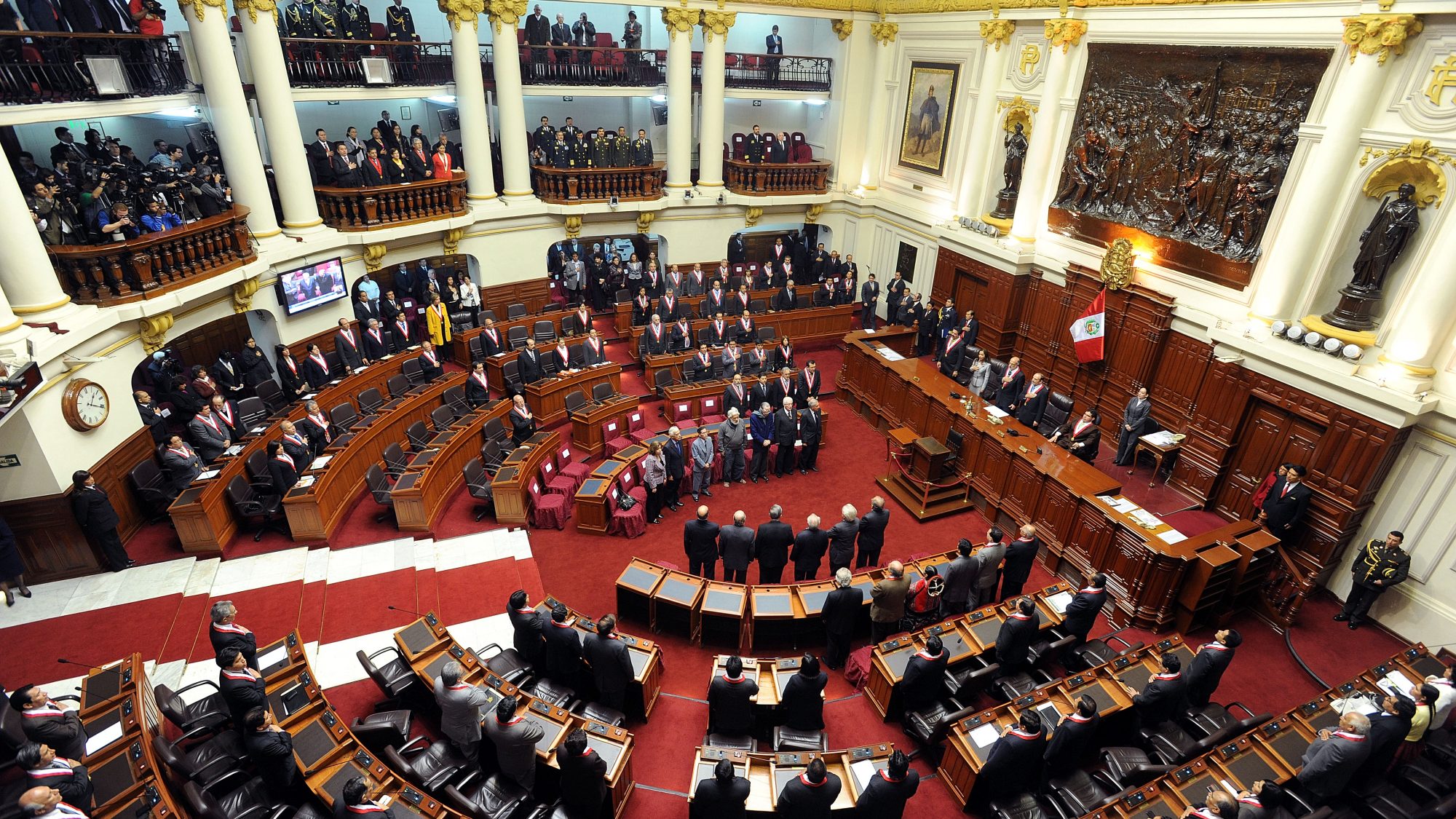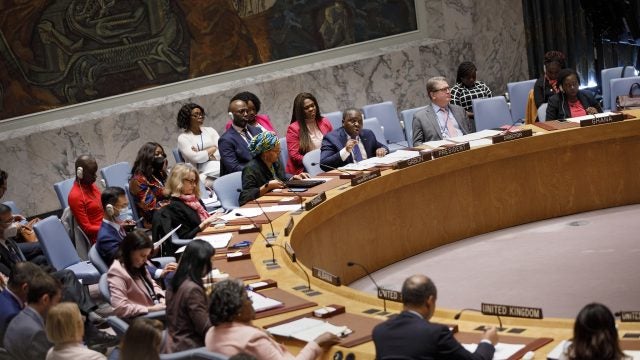
Title: In 2020, Peru Became a Tinderbox
From 2001 to 2019, amid democratic governance, Peru achieved economic growth with equity. But in 2020, the pandemic exposed long-standing problems, especially limited investment in public goods and fragile social networks. As anger mounted, so did political turbulence. After the impeachment of President Martín Vizcarra, massive protests forestalled a political takeover by rightist political dinosaurs, but the same challenges that faced Vizcarra face the new president, Francisco Sagasti. For political and economic recovery, success in the battle against COVID-19 is key.
For the first nineteen years of the twenty-first century, Peru was a Latin American success story. Economic growth was rapid; poverty and inequality declined; democracy was uninterrupted. In 2020, however, the pandemic hit Peru very hard; long-standing problems were exposed, and protests intensified. Fortunately, many political leaders, including those in the current government, agree that it is past time that Peru’s democracy responds more effectively to citizens’ concerns. In the immediate term, the government must ensure transparency in the purchase and distribution of the COVID-19 vaccine and increase investment in public health.
It is not clear why the pandemic hit Peru so hard, but it is clear that it has been devastating. In January 2021, Peru’s mortality rate was the tenth worst in the world and the worst in Latin America. In nine months, almost forty thousand Peruvians died of the virus—more than half the number that died amid the Shining Path insurgency that wracked the country for more than a decade in the 1980s-1990s. In 2020, Peru’s GDP is forecast to plummet approximately thirteen percent—the steepest decline ever recorded in Peru and the steepest in Latin America except for Venezuela. By one estimate, more than six million Peruvians, or more than fifteen percent of the population, lost their jobs.
Of course, despair and anger were pervasive. As data from World Bank Indicators show, the limitations to Peru’s recent advances were glaringly evident. Although Peru’s GDP (in constant international dollars) almost doubled between 2000 and 2017, a rate greater than the Latin America and Caribbean average of roughly twenty-five percent, attention to critical public goods was lacking. For example, from 2000 to 2017, the percentage of the population using safely managed drinking water rose from forty-five percent to fifty percent, much less than the regional increase from fifty-six percent to seventy-four percent. Peru’s maternal mortality rate improved, but at 88 deaths per 100 thousand live births in 2017, was still much worse than the regional average of 74 deaths. Similarly, the number of hospital beds per 1,000 people was 1.59 in Peru in 2017, below the regional average of 1.90.
Why, despite democracy, did Peru’s post-2000 governments fail to prioritize public goods? Legions of scholars, including Steven Levitsky, Patricio Navia, and Martín Tanaka cite Peru’s weak political parties. There is no doubt that most of Peru’s parties have been mere electoral vehicles that broke down when the leaders could not deliver on their campaign promises.
However, the weakness of Peru’s political parties is in good part the reflection of the weakness of its social networks. Tragically, since the Spanish conquest of South America’s largest and most sophisticated indigenous civilization, social cleavages have been particularly severe in Peru. Without shared communities and without common norms, corruption has been endemic. By the estimate of the historian Alfonso Quiroz, under no administration since Peru’s independence was the cost of corruption less than 1 percent of Peru’s GDP.
In 2016, after Odebrecht, a huge Brazilian construction company, acknowledged the payment of more than 700 million dollars in bribes across ten Latin American countries, including 29 million dollars in Peru, a war against corruption began in Peru. As Peru’s democracy endured, anti-corruption forces were gaining strength: investigative journalists were bolder, the media freer, and the judiciary more independent of the executive. Amid the pandemic, a plethora of reports were published that state authorities were taking bribes to purchase sub-standard equipment and medicine and approve the construction of sub-standard infrastructure, including hospitals. Of course, Peruvians’ anger escalated.
All four presidents elected since 2000, scores of additional authorities, and more than half the members of the current legislature have been investigated. The president elected in 2016, Pedro Pablo Kuczynski, resigned in 2018 to avoid impeachment due to his unreported dealings with Odebrecht. Kuczynski was succeeded by his first vice-president, Martín Vizcarra. Vizcarra championed the war against “the traditional corrupt political class” and, as a result, won hearty applause from the overwhelming majority of Peruvians.
At the same time, however, resistance was fierce, and politicians’ tempers—short in any case amid the pandemic—were shorter yet amid long pre-trial detentions, frequent judicial delays, and inconsistent rulings. In October, allegations of corruption erupted against Vizcarra himself. Although these allegations were made by suspects in criminal cases aspiring to plea bargains and were not credible to most Peruvians, legislators were beguiled by the possibility of ousting the confrontational president.
Legislators were also considering their immediate political and financial interests. They were angry at the brevity of their terms (elected in January 2020, they are barred from re-election in 2021). Presidential and legislative elections are due in April 2021, and legislators hoped to delay the elections and tilt the electoral playing field in their favor. Further, numerous legislators had financial interests in for-profit universities that were threatened by newly introduced higher standards for universities.
On November 9, Vizcarra was impeached by Peru’s Congress, with 105 of 130 legislators in favor. As stipulated by Peru’s constitution, Vizcarra was succeeded by the Congress’s Speaker, Manuel Merino. A three-term legislator for the long-standing mainstream party Acción Popular, Merino had no legislative achievements to his credit and was perceived as the embodiment of the “traditional corrupt political class.” His cabinet appointments were far to the right.
Immediately, Peruvians came together against Merino and made their voices heard. The protests were the most massive in Peru since the 1970s. The protestors hailed from all social classes and all regions of the country; more than one-third of Peruvians reported that they participated in some way. Millennials participated in huge numbers. “Merino does not represent us” was one of the most common chants. When attempts at repression by the police led to two deaths and more than sixty injured, the protests intensified further.
The protests succeeded. Merino’s coalition fragmented and ultimately his only recourse was to resign. In previous impeachments of Latin American presidents that polarized the country—the impeachment in Honduras in 2009, Paraguay in 2012, and Brazil in 2016—the new, rightist governments were consolidated, but not in Peru.
The next challenge was to choose a new Congress Speaker who would succeed Merino as president. This time, legislators were sensitive to the transcendental importance of their decision, and on November 16, 2020, they rallied around a respected centrist, Francisco Sagasti. A policy analyst and professor with a Ph.D. from the University of Pennsylvania, Sagasti is a first-time legislator for the Partido Morado, the only party in the legislature that had voted in its entirety against Vizcarra’s impeachment. Like Sagasti, the new cabinet members are professionals with advanced degrees and considerable experience in their respective sectors.
But the problems that faced Vizcarra also face Sagasti. Sagasti and his ministers promised to dialogue, negotiate, and pursue common ground, and have done so to date. However, as the pandemic continues to rage, with its devastating toll on human life and the economy, it is vital that the government prioritize the battle against COVID-19. In the next few months, as the Biden administration shifts US foreign policy towards multilateralism, international support for the equitable supply of vaccine worldwide would be very helpful to redress the insufficient supply in Peru and other developing countries
Right now, Peru’s strategies for vaccine purchases (currently of China’s Sinopharm) and distribution should be analyzed rigorously and explained thoroughly. Both to win the battle against COVID-19 and to restore citizens’ trust in government, immediate emergency funding for public health centers, conditional upon rapid vaccinations, is key. Draconian measures against vaccine-related corruption would also be very helpful to these ends.
In addition to the severe challenges posed by the pandemic, presidential and legislative elections are due in April. While the elections provide an alternative to protest, there is also the possibility that electoral authorities’ rulings will be deemed unfair, stoking tensions. Sagasti’s party, the Partido Morado, is a leading contender, and Sagasti will have to be careful to keep his promise of neutrality.
Turbulence is likely to continue in Peru in 2021—as, with similar triggers, it is likely to continue in much of the world. Without a commitment to Peru as a nation and without social trust, it is very difficult to build political organizations that bring leaders and citizens together and it is very difficult to build state capacity. Yet, it has often been pointed out that “The arc of the moral universe is long, but it bends towards justice,” and this has been true for Peru.
. . .
Cynthia McClintock is Professor of Political Science at George Washington University. She is the author of Electoral Rules and Democracy in Latin America (Oxford University Press, 2018), Revolutionary Movements in Latin America: El Salvador’s FMLN and Peru’s Shining Path (U.S. Institute of Peace, 1998), and Peasant Cooperatives and Political Change in Peru (Princeton University Press, 1981). She is also the co-editor of The Peruvian Experiment Reconsidered (Princeton University Press, 1983) and The United States and Peru: Cooperation at a Cost (Routledge, 2003). She was the President of the Latin American Studies Association in 1994-95, a member of the Council of the American Political Science Association (APSA) in 1999-2000, and Chair of APSA’s Section on Comparative Democratization in 2003-05. Awarded a Fulbright grant, she taught at the Catholic University in Peru in 1987, and in 2008 received the Orden del Sol del Perú (Order of the Sun of Peru, awarded by the Peruvian state for extraordinary contributions to Peru). In 2019, she won the Lifetime Achievement Award of the Latin American Studies Association’s Peru Section.
Image Credit: Congreso de la República del Perú
Recommended Articles

This article explores the uncertain future of Arctic governance amid shifting global geopolitics. It argues that whether Washington and Moscow opt for confrontation or cooperation, multilateralism in the Arctic…

Twenty-five years ago, the United Nations Security Council adopted Resolution 1325, establishing a framework that underpins the Women, Peace, and Security (WPS) Agenda. The Resolution recognized both the…

When we analyze conflicts in the Middle East, we are not analyzing conflicts with isolated impacts but risks for global energy security. Recent conflicts in the Middle East have highlighted…